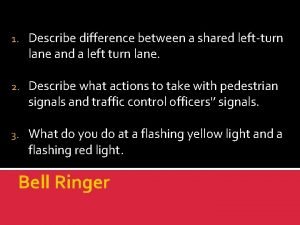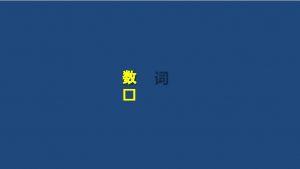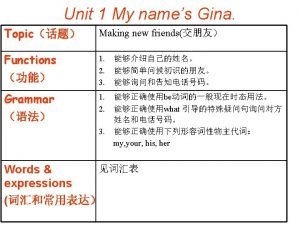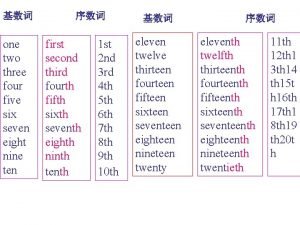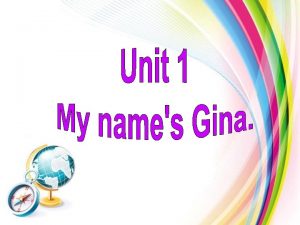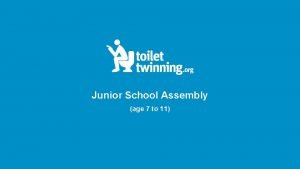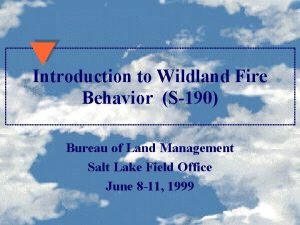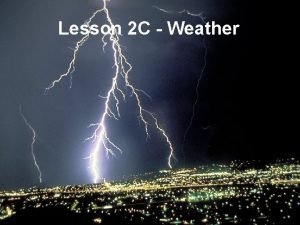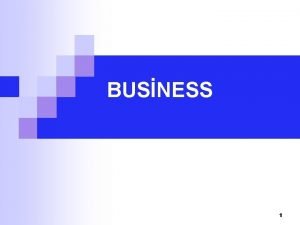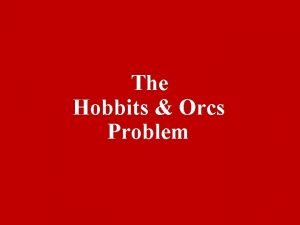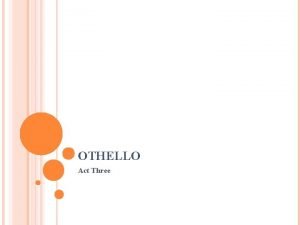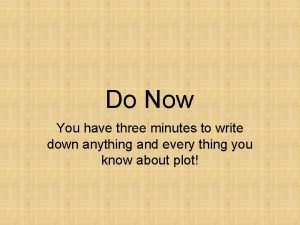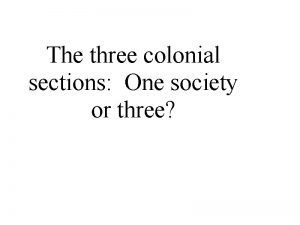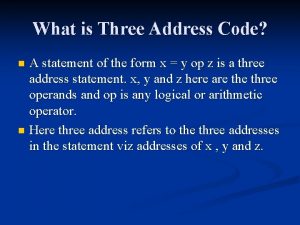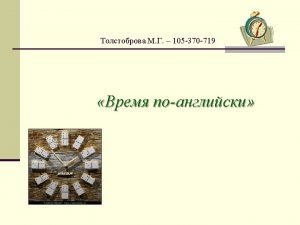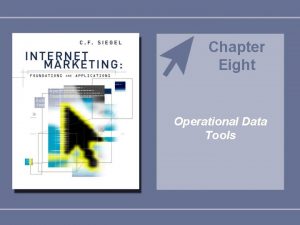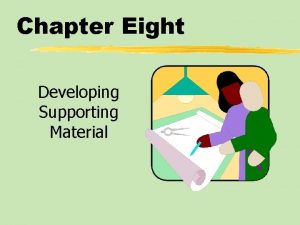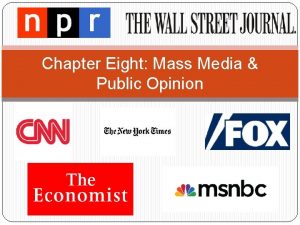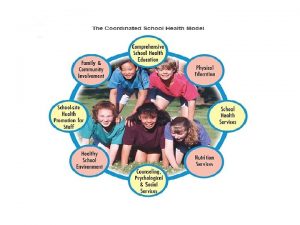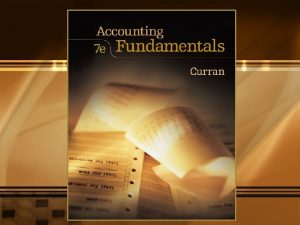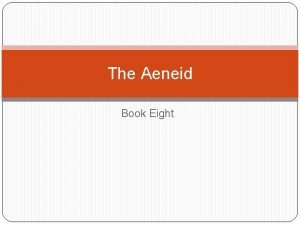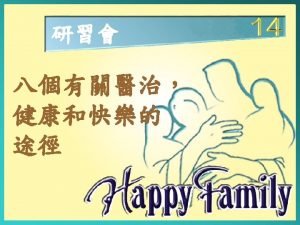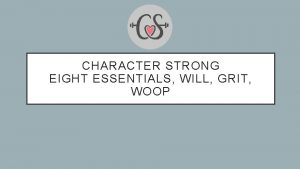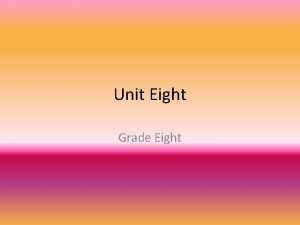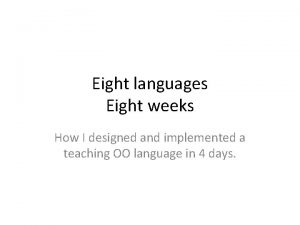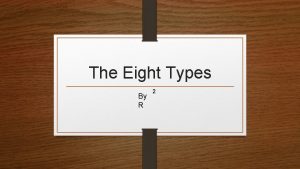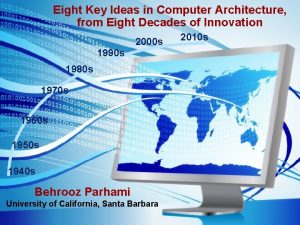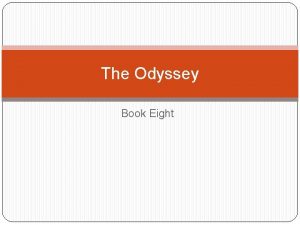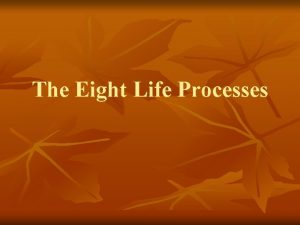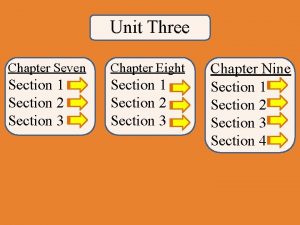Chapter Eight School Curriculum School Curriculum Three general




















- Slides: 20

Chapter Eight School Curriculum

School Curriculum Ø Three general components of the curriculum: l l l the formal curriculum the unintended curriculum extracurricular activities

The Formal Curriculum (explicit curriculum) Ø What students are taught Ø The selection of subject matter Ø The topics included Ø The depth of coverage for each topic Ø The textbooks that detail this knowledge Ø The curriculum guides that lay-out the topics in a systematic way

Unintended Curriculum (the implicit curriculum) Ø Consists of the messages sent to our students about what is valuable. Ø The omission of topics in the curriculum suggests that certain information is not important.

Extracurricular Activities Ø These include school band, athletics, and theater. Ø These programs are often removed from the curriculum, to focus on the “basics. ”

The Struggle for Control of the Curriculum Ø Ø Ø For over two hundred years the curriculum has been dictated by politicians, businessmen, and religious leaders. During the Colonial period, the Bible and prayers formed the basis of the curriculum. During the 1800 s the curriculum reflected the prevailing Protestant culture, patriotism and hard work. In the mid 1900 s leaders turned to the schools to address social problems such as drugs and alcohol abuse, pre-marital pregnancy, and sexually transmitted diseases. Today, the curriculum has become “exam driven”, mandated by the NCLB and high stakes, multiple choice testing.

Structure & Organization of Curriculum Today Ø Despite the important changes in the curriculum over time, there is little consensus concerning its structure or organization. Ø We can conceptualize it as a continuum with subject/teacher-centered (authoritarian) organization on one end and learner-centered (democratic) organization on the other.

Curriculum Organization Continuum Learner-Centered Integrated Fused Subject-Centered < --------------------------

Learner-Centered Curriculum (The Democratic Approach) Focus on learners & their needs Ø Emphasis on promoting overall growth of learners Ø Stresses student’s understanding Ø Develops communication and social skills Ø Emphasis on cooperative learning Ø Students and teachers are involved in selection and organization of subject matter and materials Ø Emphasis on problem solving Ø

The Integrated Curriculum Ø Unites all the subjects under one theme or topic. Ø In a primary grade the story of “The Little Red Hen”, would include: l l Social Studies by learning about the farm Science through growing plants Math with a discussion of measurements used in baking bread Health by focusing on eating healthfully

The Fused Curriculum Ø Less structured Ø Attempts to blend related subjects Ø Spelling, reading, writing, and English might be combined into Language Arts.

Subject Centered Curriculum (Authoritarian Approach) Traditional form of the curriculum Ø Each subject is taught separately Ø Content is laid out in a highly structured, sequential method Ø Students are presented with precise information that will appear on the test Ø All knowledge is imparted to the student by the teacher Ø Students are held accountable for content mastery Ø

Authoritarian v Democratic Instruction Ø The curricular approach fosters a particular type of instruction Ø The authoritarian (subject centered) - the teacher is the focus of instruction Ø The democratic (learner centered) - the teacher serves as a guide with students actively engaged

Teacher-Centered Instruction (Authoritarian Approach) Focus is on instructor Ø Instructor talks, students listen Ø Students work alone Ø Instructor monitors and corrects students Ø Instructor answers students’ questions Ø Instructor chooses topics Ø Instructor evaluates student learning Ø Classroom is quiet Ø

Learner-Centered Instruction (Democratic Approach) Focus is on both students and instructor Instructor models; students interact with instructor and one another Ø Students work in pairs, in groups, or alone depending on the purpose of the activity Ø Instructor provides feedback/correction when questions arise Ø Instructor is an information resource Ø Students have some choice of topics Ø Students and instructor evaluate learning Ø Classroom is often noisy and busy Ø Ø

Curriculum Tracks Ø Academic or College Preparation Ø Career Preparation Ø Occupational Preparation

Expansion of the Contemporary Curriculum Ø Ø Ø Ø Emergence of an academically challenging kindergarten Vocational/technical training The inclusion of more foreign languages Greater cultural diversity of literature and social studies The use of schools as an agent of social improvement (Sex Education, Drug Education, etc. ) The strengthening of character and moral education Emphasis on accountability and standards.

Accountability and Standards Central to the expansion of the contemporary curriculum has been an increased emphasis on accountability and standards. Ø Most pre-service teachers are required to successfully pass the Praxis I and II exams for state licensure. Ø In addition, the Interstate New Teacher Assessment and Support Consortium (INTASC) has developed a number of standards that are used to assess beginning teachers. Ø

INTASC Standards Ø Ø Ø Content Pedagogy – The teacher can make the subject matter meaningful. Student Development – The teacher can provide learning that supports the student’s individual development. Diverse Learners – The teacher can provide opportunities for diverse learners. Multiple Instruction Strategies – The teacher uses a variety of instructional strategies. Motivation and Management – The teacher uses a variety of motivational and classroom management techniques.

INTASC Standards (Continued) Ø Ø Ø Communication – The teachers fosters active and collaborative learning in the classroom. Planning – The teacher develops an effective instructional plan to help all children learn. Assessment – The teacher uses formal and informal assessment strategies. Reflective Practice – The teacher uses reflection and journaling to improve instruction. School and Community Involvement – The teacher establishes relationships with the colleagues, parents and the community in general.
 Whats a plane figure
Whats a plane figure What are the meanings of the eight shapes and eight colors
What are the meanings of the eight shapes and eight colors Two three four five six seven
Two three four five six seven Zero one two three four five six seven eight nine ten
Zero one two three four five six seven eight nine ten One two three four five six
One two three four five six Five seven nine
Five seven nine In a school assembly eight children
In a school assembly eight children Summary of the great gatsby chapter 8
Summary of the great gatsby chapter 8 Lotf chapter 9 summary
Lotf chapter 9 summary Planos en cinematografia
Planos en cinematografia Where did general lee surrender to general grant?
Where did general lee surrender to general grant? Identify three effects of low humidity s190
Identify three effects of low humidity s190 Three types of general winds s190
Three types of general winds s190 How to start a busness
How to start a busness Hobbits and orcs problem
Hobbits and orcs problem Othello act three scene three
Othello act three scene three In three minutes write three things you did yesterday
In three minutes write three things you did yesterday Regulatory signs examples
Regulatory signs examples The three colonial sections-one society or three
The three colonial sections-one society or three Three address code
Three address code A: what time is it?b: it's half past three.a: it's clock 1.
A: what time is it?b: it's half past three.a: it's clock 1.

